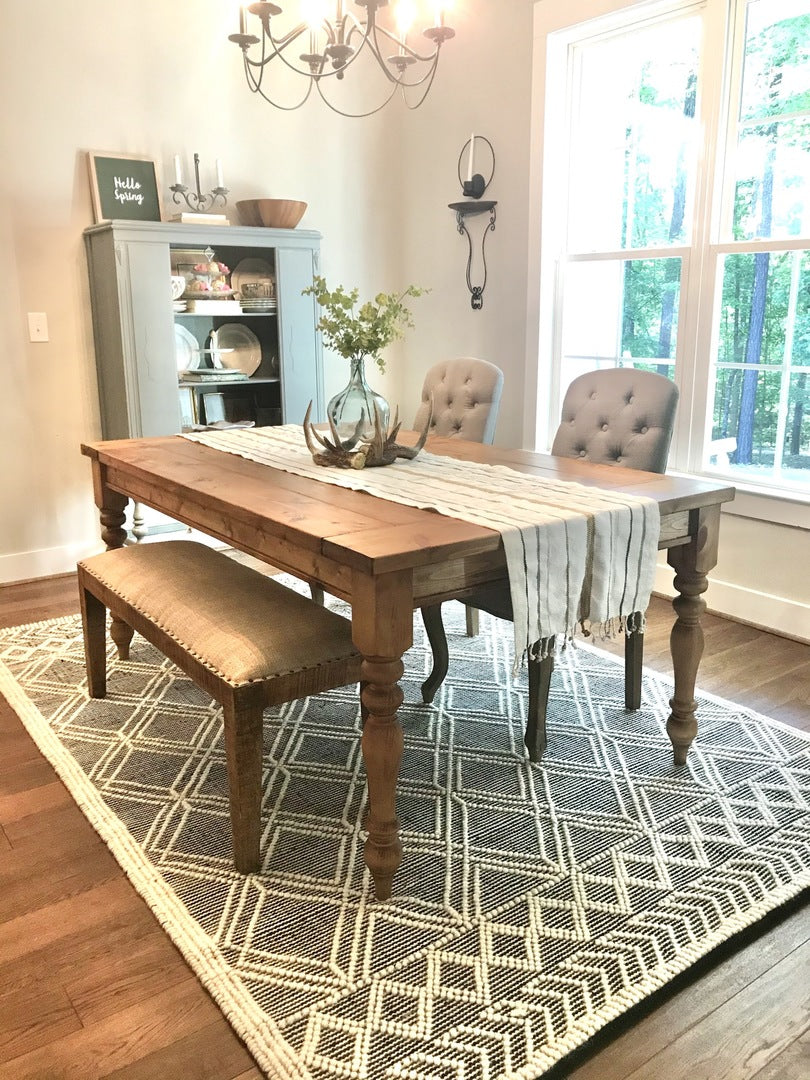Top Trends in Dining Room Table Legs to Boost Your Eating Area
Top Trends in Dining Room Table Legs to Boost Your Eating Area
Blog Article
A Comprehensive Look at Table Leg Styles: Discovering the Ideal Match
Choosing the best table leg design is critical for both aesthetic appeal and practical capability. Standard 4 legs supply classic sophistication and stability, while the pedestal base gives increased legroom and a modern appearance. For those with larger tables, trestle legs make certain strong support, whereas hairpin legs introduce a mid-century modern-day ambiance with their minimalist design. The x-shaped legs mix contemporary style with boosted security. Each of these alternatives brings distinct benefits, making the choice greater than just an issue of choice. Check out further to discover which design completely enhances your dining space and lifestyle.
Conventional Four Legs
Among the different kinds of eating table leg styles, the traditional four-leg style stays an ageless choice for several houses. 4 legs give balanced assistance, ensuring the table remains steady and capable of bearing significant weight (dining room table legs).
From a visual point of view, the conventional four-leg design can be conveniently adjusted to different indoor styles. Whether crafted from wood, steel, or a mix of materials, these legs can be delicately sculpted, smooth and minimalistic, or anything in between. Their versatility permits them to enhance both rustic and modern settings flawlessly.
Moreover, the simple structure of the four-leg layout helps with ease of activity and positioning within a space. Unlike more complex bases, this design minimizes obstructions, providing ample legroom for diners. In summary, the typical four-leg dining table leg style weds sustaining elegance with useful functionality, making it a sharp option for those looking for both type and feature in their dining furnishings.
Pedestal Base
Frequently commemorated for its stylish and space-efficient style, the stand base is a distinguished alternative to the traditional four-leg setup in eating table leg designs. Without corner legs, diners are afforded greater freedom of movement, making it an excellent selection for round and oval tables that promote even more intimate and inclusive events.
Additionally, the pedestal base's central support can take care of considerable weight, enabling using larger table tops, such as marble or thick wood. This toughness combined with its visual flexibility makes the stand base a popular choice in both standard and contemporary indoor setups. It can seamlessly integrate with different style styles, from classic style to minimal modernity. The central column itself uses a canvas for intricate styles and imaginative expressions, adding an element of visual interest under the table. In summary, the pedestal base incorporates capability with design, making it a refined and practical option for varied dining environments.
Trestle Legs
Trestle legs provide a robust and timeless structure for eating tables, defined by their straight cross-bracing and durable assistance light beams. Stemming from medieval times, this style has evolved yet retained its important structure, making it a perennial fave in both traditional and contemporary setups. The main trestle beam, often supported by 2 or more upright messages, offers remarkable stability, enabling for bigger table lengths without the need for extra legs.
A significant benefit of trestle leg tables is the adequate legroom they provide. Unlike tables with four edge legs, the absence of blockages at the table's edges gives unimpeded area for chairs and diners, boosting convenience and availability. This makes trestle tables excellent for accommodating larger gatherings, whether in a dining-room or a reception hall.
The aesthetic adaptability of trestle legs is noteworthy. Offered in a selection of products such as timber, metal, and composite, they can be ended up to enhance a broad variety of interior designs. From rustic farmhouse to streamlined modern styles, trestle legs can be customized to fit private preferences. Their long-lasting allure and practical advantages make trestle legs a compelling choice for those looking for both design and usefulness in their eating table.
Barrette Legs

The allure of hairpin legs hinges on their simpleness and versatility - dining room table legs. Readily available in a variety of materials, including steel and brass, they can be ended up in countless shades to complement various interior designs. Whether paired link with a rustic wooden tabletop or a modern glass surface area, barrette legs easily blend performance with a touch of vintage appeal
Resilience is another significant attribute of hairpin legs. In spite of their delicate appearance, these legs are engineered to bear considerable weight, guaranteeing the table continues to be steady and protected. Additionally, they are reasonably simple to install, making them a popular choice for DIY fanatics and specialist furnishings manufacturers alike.
X-Shaped Legs

Built from materials such as steel, wood, or a combination of both, X-shaped legs can be tailored to match numerous design choices. Steel legs commonly offer a smooth and industrial feel, ideal for loft-style apartments and modern-day dining rooms.
Moreover, the design behind X-shaped legs makes certain even weight circulation, lessening the risk of tottering and improving toughness. This makes them especially appropriate for bigger eating tables that call for added support. Essentially, X-shaped legs mix practical design with modern visual appeals, straight from the source making them click resources a classic option for diverse dining settings.
Conclusion
An extensive understanding of dining table leg designs discloses the distinctive qualities and advantages of each style. Trestle legs ensure robust assistance for bigger tables, and hairpin legs present a mid-century contemporary aesthetic.
Report this page